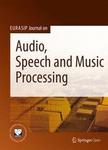版权所有:内蒙古大学图书馆 技术提供:维普资讯• 智图
内蒙古自治区呼和浩特市赛罕区大学西街235号 邮编: 010021

作者机构:Carl von Ossietzky Univ Oldenburg Dept Med Phys & Acoust D-26111 Oldenburg Germany Carl von Ossietzky Univ Oldenburg Cluster Excellence Hearing4all D-26111 Oldenburg Germany
出 版 物:《EURASIP JOURNAL ON AUDIO SPEECH AND MUSIC PROCESSING》 (Eurasip J. Audio Speech Music Process.)
年 卷 期:2025年第2025卷第1期
页 面:1-18页
核心收录:
学科分类:0808[工学-电气工程] 0809[工学-电子科学与技术(可授工学、理学学位)] 08[工学] 0702[理学-物理学]
基 金:Deutsche Forschungsgemeinschaft
主 题:Convolutional neural networks Spatial feature Periodicity feature Binaural DOA estimation Multiple talkers Feature reduction Hearing devices.
摘 要:Deep neural network-based direction of arrival (DOA) estimation systems often rely on spatial features as input to learn a mapping for estimating the DOA of multiple talkers. Aiming to improve the accuracy of multi-talker DOA estimation for binaural hearing aids with a known number of active talkers, we investigate the usage of periodicity features as a footprint of speech signals in combination with spatial features as input to a convolutional neural network (CNN). In particular, we propose a multi-talker DOA estimation system employing a two-stage CNN architecture that utilizes cross-power spectrum (CPS) phase as spatial features and an auditory-inspired periodicity feature called periodicity degree (PD) as spectral features. The two-stage CNN incorporates a PD feature reduction stage prior to the joint processing of PD and CPS phase features. We investigate different design choices for the CNN architecture, including varying temporal reduction strategies and spectro-temporal filtering approaches. The performance of the proposed system is evaluated in static source scenarios with 2-3 talkers in two reverberant environments under varying signal-to-noise ratios using recorded background noises. To evaluate the benefit of combining PD features with CPS phase features, we consider baseline systems that utilize either only CPS phase features or combine CPS phase and magnitude spectrogram features. Results show that combining PD and CPS phase features in the proposed system consistently improves DOA estimation accuracy across all conditions, outperforming the two baseline systems. Additionally, the PD feature reduction stage in the proposed system improves DOA estimation accuracy while significantly reducing computational complexity compared to a baseline system without this stage, demonstrating its effectiveness for multi-talker DOA estimation.